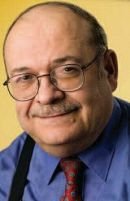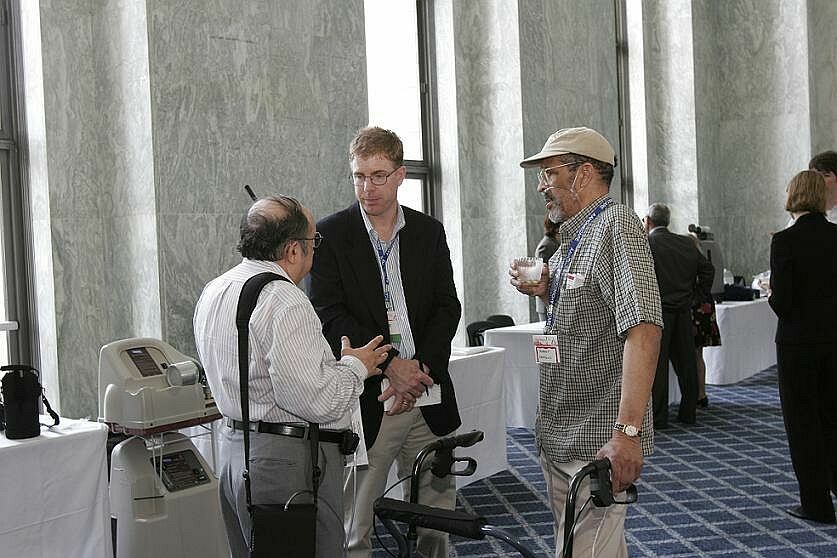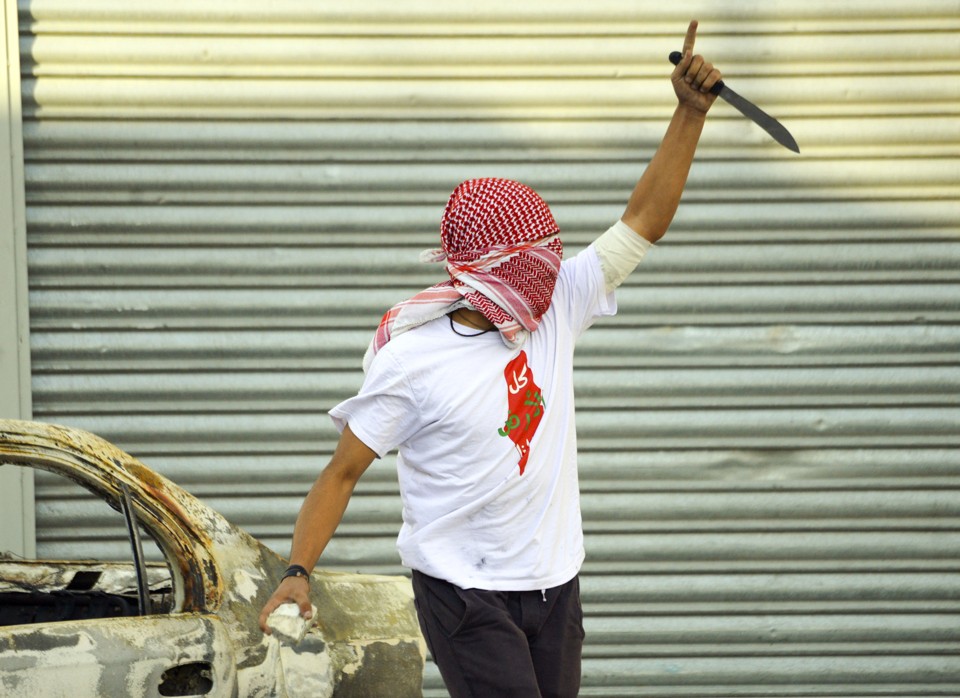 Vlady Rosenbaum Joins the PERF Board of Directors
Vlady Rosenbaum Joins the PERF Board of Directors
Zawsze zaangażowany odszedł od nas kolega, znajomy, przyjaciel… Vlady (Włodek) Rozenbaum
Włodek Rozenbaum, zmarł w czasie snu w nocy z 16-ego na 17-ego pazdziernika. Miał 75 lat.
Dr. Tom Petty and Vlady at the 6th Oxygen
Consensus Conference in Denver, Colorado.

Have you noticed the new name added to our list of Board of Directors? Vlady Rozenbaum is well known in the pulmonary community, among professionals as well as patients. Vlady is himself an activist COPD patient on oxygen. While all of us on the PERF Board of Directors are patient advocates Vlady, and all the patients that he represents from COPD-ALERT, can help us do an even better job to understand your every day problems. But I will let Vlady himself tell you more about who he is. We think you will agree with us that he is a valuable addition to our Board!
In his own words
I was born in the Soviet Union and spent the war years there. Then I lived in Poland, where I was diagnosed with bronchiectasis and underwent a lobectomy on my right lung in 1952. My condition improved markedly. I studied English and Linguistics at the Warsaw University and later worked as editor of technical translations into English for the U.S. Department of Commerce. I married my wife, a physicist, and in 1969 we came as political refugees to the U.S. I pursued graduate studies in history and political science, ending up with a Ph.D. After teaching college in Virginia and Indiana for a while I joined the civil service. I held a variety of positions: equal opportunity specialist; Soviet/East European geographer for the Defense Department; regional expert for the U.S. Board of Geographic Names; foreign languages instructor; and intelligence analyst. In 2000 I retired on disability due to very severe COPD (diagnosed around 1980). This prompted me to get involved in patient support and advocacy activities.
I established an online group, COPD-ALERT, national in scope, but allowing foreign members as well. We also have as members leaders of some other support groups. We joined various COPD coalition organizations and established strong ties with the NHLBI, PERF, Alpha-1, AARC, NECA, CHASM, and the Congressional COPD Caucus. I have attended many conferences, symposia, and workshops and spoke at the FDA hearings and on the Capitol Hill.

Membership in COPD-ALERT is free. The group has two websites on Yahoo: One is for members only (with messages, photos, links, articles, and archives) and a second is for public access (http://www.copd-alert.com). The only requirement for approval is that the applicant sends me his/her full name, address, and telephone number (the address and telephone are waived for foreign applicants). I introduced this policy three years ago when we inadvertently admitted persons whose aim was to disrupt our group and harass individual members. Despite this restriction we have some 400 members and are getting new ones all the time.
Vlady editing the COPD-Alert website

Our membership forum is open 24 hours a day, seven days a week and there is always somebody to talk to. The forum focuses on daily living with COPD including advances in COPD treatment (the latest medical and technological news from medical journals and manufacturers), information about medications and medical procedures (COPD and COPD-related – cardiovascular, GERD, anxiety/depression, smoking cessation, obesity, etc.), advocacy issues (information about pending legislation and federal regulations – CMS policies, oxygen use, reimbursements, funding for research, etc.) Members’ posts describe their experiences, ask questions, and offer tips. We have notifications of patient and medical meetings around the country, and provide links to valuable sites. We also enlist comments from experts, some of whom are members of our group. Since a number of our members get involved in advocacy and participate in many activities on national and local levels, our members get first-hand information from them, not just summaries from the media or medical sites. I personally have attended many conferences, symposia, and workshops and spoke at the FDA hearings and on the Capitol Hill and shared my experiences with the group. COPD-ALERT has its logo (we have a lapel pin) and a mascot, which can be seen on our website. COPD-ALERT has been featured in a number of publications and our website has links to some of them.

While I am more than busy with COPD-ALERT and COPD advocacy (hardly any time left for my doctors), my interests go beyond COPD. For many years I have been involved in research on Russian and East European history with some publications to my credit. I am on the board of directors of an international genealogical organization and of the Computer Center in my retirement community. In my “spare” time I go to pulmonary rehab three times a week and test new ambulatory oxygen systems developed for COPD patients.
Vlady testing the new Eclipse oxygen concentrator on a train in Poland.
Everyone on the PERF Board is impressed with Vlady’s COPD-Alert website and the enormous amount of work he puts into keeping it current. We are now also members of COPD-Alert and feel free to recommend it to all of you. Take a look and send us your opinion.






twoje uwagi, linki, wlasne artykuly, lub wiadomosci przeslij do: webmaster@reunion68.com





